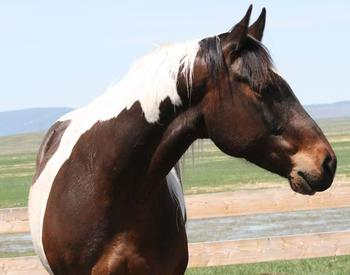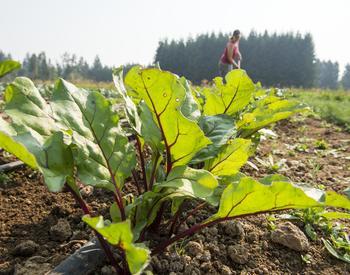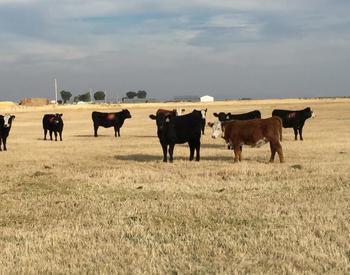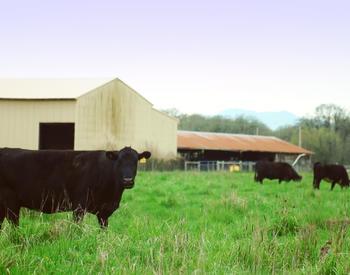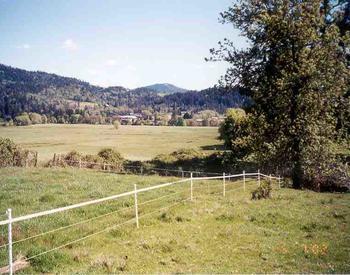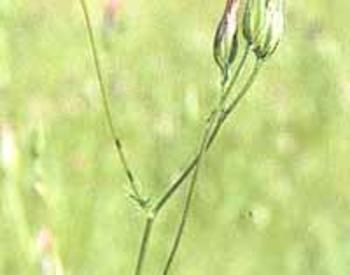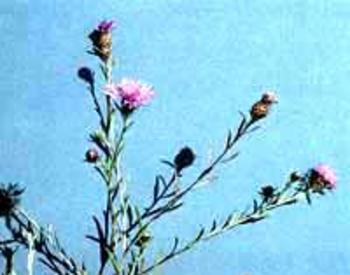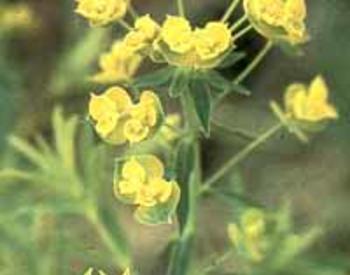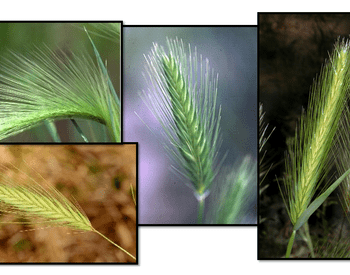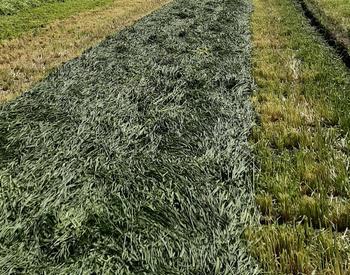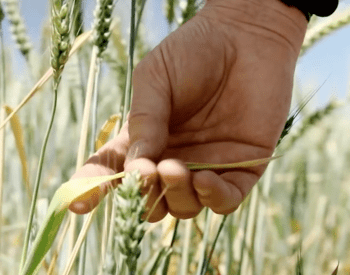A debilitating condition in horses called stringhalt may be associated with Hypochaeris radicata also known as false dandelion, flatweed, common catsear or summer dandelion. This invasive species is common in pastures throughout Oregon.
Stringhalt is a neurological condition that affects the mobility in a horse’s hind legs. It is characterized by a jerky, exaggerated flexion of one or both hocks towards the abdomen with a delayed extension when moving forward. If the horse is diagnosed with stringhalt after being on pasture, it is referred to as pasture stringhalt. The cause of pasture stringhalt is not fully understood and has not been reproduced experimentally by purposely feeding false dandelions, but there are commonalities in cases.
- Horses are diagnosed in late summer or autumn, when hot and dry.
- Limited forage is available, often horses are on overgrazed pastures or in weedy dry lots.
- There is a high population of Hypochaeris radicata in the pasture or dry lot area.
The good news is that not all horses seem to be affected and typically once the diagnosed horse is removed from the weed infested area it recovers. Depending on the severity, horses may improve within a short period of time, but often take several months or longer. In some cases, additional procedures may be included in the veterinarian’s treatment plan.
Since false dandelion may be associated with stringhalt, it is worth identifying the weed to determine if reducing the population is justified as a preventative action. This plant resembles common dandelion, with milky juice, a basal rosette of leaves, and yellow flowers. However, common dandelion has a hollow single stem for each flower while false dandelion has a fibrous stem that are branched with multiple flowers per stem. False dandelion has lobed leaves covered in short, coarse hairs.
False dandelion, a perennial, is challenging to control and requires multiple management strategies including improving overall pasture conditions. Hand pulling and soil cultivation can control this weed, but since it can resprout, the taproot must be removed with a shovel or exposed and severely damaged through cultivation when the soil is dry. Mowing is not considered effective because of resprouting but may reduce future populations by removing flower buds before blooming.
Large infestations often require herbicide treatment. There are several selective broadleaf herbicides that will not damage established grass species if applied following the instructions on the product’s label. Herbicides are most effective when applied to the rosette of the plant prior to flowering, most commonly in the spring or fall. The Pacific Northwest Weed Control Handbook includes a comprehensive section about controlling broadleaf weed species in pastures.
Managing pastures to provide quality forage is key to long-term control of weed species. Most weed infestations occur in fields where desirable grasses are overgrazed, creating bare, compacted areas for weeds to grow. Rotating horses through pastures to allow for grasses to regrow, keeping animals off fields when soils are wet, applying fertilizers according to soil test results to provide nutrients for forage, and moving animals off the field and feeding hay when adequate forage is not available are all practices that help in reducing weed pressure. In some cases, renovating and replanting the weedy field may be needed.
Resources
For more information about pasture and grazing management refer to the following resources:
References
Cheeke, P.R. 1998. Natural Toxicants in Feeds, Forages and Poisonous Plants Second Edition. Pg 389. Oregon State University. Interstate Publishers, Inc.
DiTomaso, J.M., G.B. Kyser et al. 2013. Weed Control in Natural Areas in the Western United States. Pg 544. Weed Research and Information Center, University of California. https://wric.ucdavis.edu/information/natural%20areas/wr_H/Hypochaeris_glabra-radicata.pdf
Galey, F.D., P J Hullinger, J McCaskill. 1991. Outbreaks of stringhalt in northern California. Vet Hum Toxicol. Apr 33(2):176-7.
Gardner S.Y., et al. 2005. Stringhalt associated with a pasture infested with Hypochoeris radicata. Equine Veterninary Education. 17(3):118-122.
Young, A. 2019. Stringhalt (Equine Reflex Hypertonia). https://ceh.vetmed.ucdavis.edu/health-topics/stringhalt-equine-reflex-h…. University of California Davis.
Use pesticides safely!
- Wear protective clothing and safety devices as recommended on the label. Bathe or shower after each use.
- Read the pesticide label—even if you’ve used the pesticide before. Follow closely the instructions on the label (and any other directions you have).
- Be cautious when you apply pesticides. Know your legal responsibility as a pesticide applicator. You may be liable for injury or damage resulting from pesticide use.
